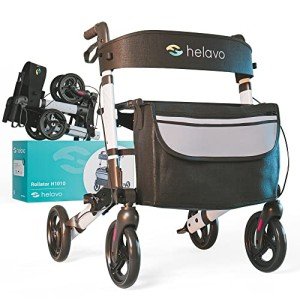The Evolution of the Modern Walker: A Comprehensive Look
Walking has long been an essential human activity, important for mobility and independence. The modern walker, a crucial tool for those who need extra support while passing through the world, has actually developed considerably for many years. This article will check out the advancement, types, advantages, and frequently asked concerns about modern walkers, working as a guide for anybody considering this mobility aid.
A Brief History of Walkers
The history of walkers can be traced back to the early 20th century. Originally designed for rehab, the first models were basic and supplied restricted support. Nevertheless, as our understanding of mobility needs advanced, so too did the design and performance of walking aids.
Timeline of Walker Development
| Year | Advancement |
|---|---|
| 1930s | The first walkers were developed, primarily for rehabilitation functions. |
| 1960s | Intro of foldable styles for simpler storage and transport. |
| 1980s | Adoption of lightweight products, improving mobility without sacrificing strength. |
| 1990s | Development of walkers with wheels, facilitating smoother movement. |
| 2000s | Modern walkers incorporated with additional features such as seats and storage compartments. |
The evolution of walkers shows not only improvements in engineering and materials but likewise a growing awareness of diverse user requirements.
Kinds Of Modern Walkers
Today, there is a broad range of walkers offered to accommodate different ages, mobility levels, and user choices. Below is a list of the most typical types:
- Standard Walkers: Basic models without wheels, providing maximum support. Ideal for those requiring substantial stability.
- Wheeled Walkers (Rollators): Equipped with 2 or four wheels, these walkers enable smoother movement. Lots of come with integrated seats for resting and storage for personal items.
- Posterior Walkers: Designed to promote a more natural walking design, these are utilized by individuals recovering from surgery or injury.
- Travel Walkers: Lightweight and collapsible, ideal for seniors and those on the go.
- All-Terrain Walkers: Built with larger wheels and sturdy frames, suitable for outdoor usage on irregular surface areas.
Comparison Table of Walker Types
| Type | Wheels | Seat | Stability | Portability | Best For |
|---|---|---|---|---|---|
| Requirement Walker | No | No | High | Moderate | Users needing max support |
| Wheeled Walker | Yes | Yes | Moderate | High | Active users requiring mobility |
| Posterior Walker | No | No | High | Moderate | Rehab from injuries |
| Travel Walker | No/Yes | Optional | Moderate | Extremely High | Regular tourists |
| All-Terrain Walker | Yes | Yes | Moderate | Moderate | Outdoor enthusiasts |
Benefits of Using a Modern Walker
Utilizing a walker can significantly boost the lifestyle for people with numerous mobility challenges. Here's a breakdown of the main benefits:
- Increased Stability: Walkers reduce the danger of falls, providing support and balance.
- Independence: They empower users to move easily without reliance on others.
- Improved Posture: Walkers motivate users to keep an upright position, which can reduce back discomfort.
- Adaptability: With options suited for different terrains and requirements, walkers can be customized to specific choices.
- Improved Mobility: Many walkers are developed for ease of motion, enabling for more active way of lives.
Regularly Asked Questions (FAQ)
1. What size walker do I need?
Choosing the right size is important for convenience and effectiveness. Ideally, walkers ought to be adjusted so that the handlebars are at wrist height when standing upright. A lot of designs are adjustable for height.
2. Can I utilize a walker for long-distance walking?
While walkers provide outstanding support and stability, it is best to seek advice from with a healthcare expert regarding long-distance use, as fatigue can embed in gradually.
3. Do I need a prescription to get a walker?
In the majority of circumstances, a prescription is not necessary, however it's beneficial to speak with a physiotherapist or doctor, particularly for those with particular medical conditions.
4. How do I maintain my walker?
Routine upkeep is essential for security and functionality. Look for loose screws, clean the tires or wheels, and inspect the frame for any wear or damage.
5. Are walkers covered by insurance?
Lots of insurance coverage strategies cover walkers, specifically when prescribed by a medical professional. It's recommended to talk to your insurance coverage service provider for specific guidelines.
The modern walker has actually come a long method from its early styles, developing into a flexible aid that can accommodate a vast array of mobility needs. With numerous types available, it is important to think about specific requirements before making a purchase. By comprehending the types, advantages, and upkeep of walkers, users can select the right design to boost their mobility and independence. As technology continues to progress, we can undoubtedly anticipate a lot more innovative styles in the future, further empowering people with mobility challenges.

